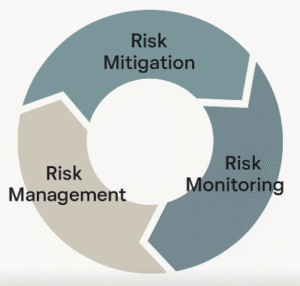- Metrics for Process and Products
- Software measurement
- Metrics for Software Quality
- Risk Management
- Reactive versus Proactive Risk Strategies
- Software Risks
- Risk Identification
- Risk Projection
- Risk Refinement
- RMMM
- RMMM Plan
- Quality Management
- Quality Concepts
- Software Reviews
- Formal Technical Reviews
- Statistical Software Quality Assurance
- Software Reliability
- The ISO 9000 Quality Standards
Quality Concepts in Software Engineering
In the realm of software engineering, a clear understanding of quality concepts is fundamental to developing successful and reliable software. These concepts lay the groundwork for what software quality truly entails, how it is perceived, and how it can be achieved. Moving beyond simply “bug-free” code, these foundational ideas guide the entire development process, ensuring that the final product not only functions correctly but also meets user expectations, is easy to maintain, and provides value. Grasping these core concepts allows teams to build quality into every stage of software creation.
Defining Software Quality
At its core, software quality can be defined in multiple ways, depending on the perspective. However, common themes emerge:
- Conformance to Requirements: The most basic definition suggests that software quality is achieved when the product meets its explicit functional and non-functional requirements. This means it does what it is supposed to do, as specified.
- Fitness for Purpose: Beyond explicit requirements, quality also means the software is suitable for its intended use and environment. It effectively solves the problem it was designed to address.
- Meeting User Expectations: Ultimately, high-quality software satisfies the needs and expectations of its users. This includes usability, performance, reliability, and overall user experience.
- Absence of Defects: While not the sole indicator, a low number of defects or errors is certainly a characteristic of quality software.
Key Perspectives on Software Quality
Understanding software quality often involves looking at it from different perspectives or through specific quality factors.
Quality Factors (as per McCall’s Model)
As previously mentioned in metrics for software quality, McCall’s Quality Factors provide a useful framework for breaking down the broad concept of quality into measurable attributes. These factors are indeed core quality concepts:
- Product Operation: Focuses on how the software performs, including correctness, reliability, efficiency, integrity, and usability. These concepts describe the immediate operational excellence of the software.
- Product Revision: Addresses the ease with which software can be changed, encompassing maintainability, flexibility, and testability. These are crucial concepts for the long-term life of the software.
- Product Transition: Deals with the software’s ability to adapt to new environments, including portability, reusability, and interoperability. These concepts are vital for the software’s adaptability and integration capabilities.
Distinguishing Quality Control and Quality Assurance
Two fundamental quality concepts are Quality Control and Quality Assurance. While often used interchangeably, they represent distinct, yet complementary, approaches to ensuring software quality.
Quality Control (QC)
Quality Control involves a set of activities focused on identifying and correcting defects in the actual software product. It is a product-oriented concept. QC activities are typically carried out after a work product (like code or a design document) has been created. The primary goal is to find errors and ensure the product conforms to specified requirements.
- Focus: Defect detection.
- When: Primarily during and after development phases (e.g., testing, inspections, debugging).
- Example: A team testing a software module to find bugs.
Quality Assurance (QA)
Quality Assurance involves a set of activities focused on establishing and ensuring adherence to the processes and standards used to build the software. It is a process-oriented concept. QA activities are performed throughout the software development lifecycle, with the aim of preventing defects from being introduced in the first place.
- Focus: Defect prevention.
- When: Throughout the entire development process (e.g., process audits, defining standards, training, creating quality plans).
- Example: A team defining coding standards or reviewing a project’s methodology to ensure it prevents common errors.
Both QC and QA are essential for comprehensive quality management. QC catches defects, while QA aims to build a process that avoids them.

Conclusion
A solid grasp of quality concepts in software engineering is indispensable for any development team aiming to deliver excellent software. By clearly defining what quality means, understanding different quality factors, and distinguishing between quality control and quality assurance, organizations can build a robust framework for managing quality. These foundational concepts drive proactive defect prevention, systematic error detection, and continuous process improvement, all contributing to the creation of reliable, user-satisfying, and successful software products.
